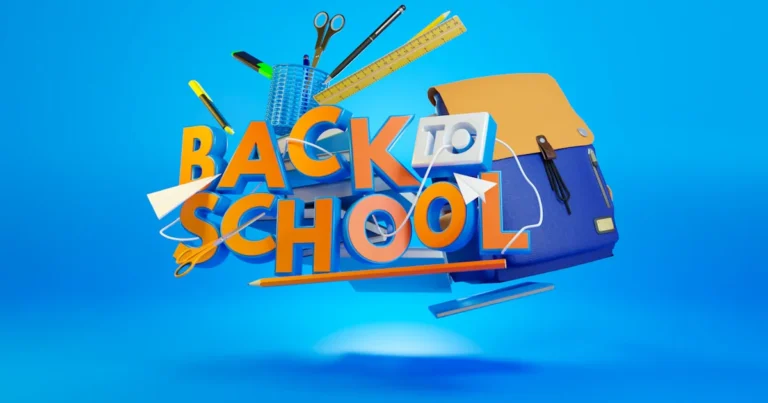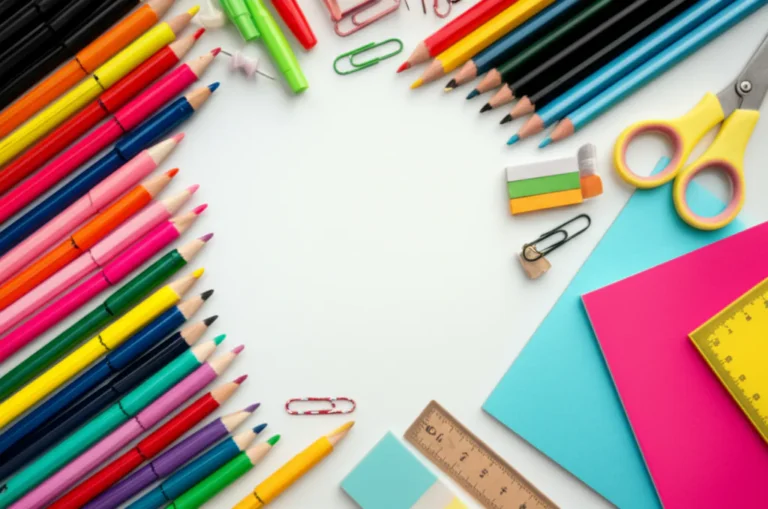Support our educational content for free when you purchase through links on our site. Learn more
Teachers’ Hidden Costs: 17+ Classroom Essentials 🍎
Did you know that the average teacher spends over $750 of their own money on classroom supplies each year? That’s right – educators are consistently reaching into their own pockets to provide their students with the resources they need to thrive. This isn’t just about pencils and paper; it’s about creating engaging learning environments, providing essential technology, and ensuring that every student has the tools to succeed. In this comprehensive guide, we delve into the reasons behind this alarming trend, explore the emotional toll on teachers, and offer practical solutions, including fundraising strategies, budgeting tips, and resources to help alleviate the financial burden. We’ll also highlight the impact on student learning and advocate for systemic change to ensure that our educators are adequately supported. Ready to discover how you can make a difference?
Key Takeaways:
- The vast majority of teachers spend their own money on classroom supplies. This is a systemic issue stemming from underfunded schools and unrealistic expectations.
- This out-of-pocket spending significantly impacts teacher well-being and contributes to burnout. The financial strain adds unnecessary stress to an already demanding profession.
- There are many ways to help alleviate this burden. Fundraising, grant applications, and community support can make a significant difference.
- Adequate funding for public education is crucial. We need systemic change to ensure that teachers have the resources they need to provide a quality education for all students.
👉 Shop for high-quality, affordable classroom supplies at Teacher Supply Store™: https://www.teachersupplystore.org/ We’re here to support you!
Table of Contents
The History of Teachers Supplementing Classroom Funds
How Much Do Teachers Spend Out-of-Pocket?
Top 15 Classroom Supplies Teachers Personally Fund
Why Do Teachers Spend Their Own Money? The Root Causes
The Emotional Toll: Teacher Burnout and Financial Strain
Innovative Solutions: Fundraising and Grant Opportunities
Advocating for Change: Policies and Political Action
Budgeting Strategies for Teachers: Making Every Dollar Count
Creative Classroom Funding: Beyond the School Budget
Teacher Supply Stores: Your Partner in Affordable Education
The Impact on Student Learning: A Deeper Dive
Search for Resources and Support
Key Takeaways: Supporting Teachers and Students
Quick Tips and Facts
Let’s face it, teaching is a labor of love—but it shouldn’t break the bank! 💔 Many teachers are digging deep into their own pockets to provide their students with the best possible learning environment. Before we dive into the nitty-gritty, here are some quick facts to set the stage:
- Over 90% of teachers spend their own money on classroom supplies annually. Source: NEA This isn’t just a small amount either; we’re talking hundreds, sometimes thousands, of dollars a year!
- The average teacher spends between $500 and $800 annually. Source: Various News Outlets But this number is climbing due to inflation. Are you surprised? We aren’t.
- You can deduct up to $300 in qualified expenses on your taxes. This is a small consolation, but it’s something! Make sure to keep your receipts! 🧾
- Many resources are available to help. From DonorsChoose to Amazon wish lists, there are ways to supplement your classroom budget without emptying your wallet. We’ll explore these later.
The History of Teachers Supplementing Classroom Funds
Believe it or not, teachers supplementing their classroom budgets isn’t a new phenomenon. For decades, educators have been reaching into their own pockets to provide their students with the resources they need. Historically, school budgets have often fallen short, leaving teachers to fill the gaps. This issue has been exacerbated in recent years by budget cuts and rising inflation. Think about it – the cost of basic supplies like pencils, paper, and glue has increased significantly, putting a strain on already stretched resources. Do you remember when a box of crayons cost a dollar? Pepperidge Farm remembers…and it’s not cheap anymore!
How Much Do Teachers Spend Out-of-Pocket?
The amount teachers spend varies wildly depending on several factors:
- School District Funding: Schools in wealthier districts often have more robust budgets, reducing the need for teachers to spend their own money. However, even in well-funded districts, teachers often find themselves supplementing classroom resources.
- Grade Level: Elementary school teachers often spend more on supplies like art materials and manipulatives. High school teachers might spend more on books and technology.
- Subject Matter: Science teachers, for example, often need to purchase expensive lab equipment and supplies. Art teachers need art supplies. The list goes on!
- Teacher’s Personal Resources: Some teachers have more disposable income than others, allowing them to spend more on their classrooms. This is obviously not fair.
The reality is that many teachers spend hundreds, if not thousands, of dollars each year on classroom supplies. This is unsustainable and highlights the need for increased funding for public education. Read more about this in our related article: Do Teachers Get a Classroom Budget? 7 Surprising Facts! 📚 https://www.teachersupplystore.org/do-teachers-get-a-classroom-budget/
Top 15 Classroom Supplies Teachers Personally Fund
Here’s a list of the top 15 classroom supplies teachers frequently purchase themselves, based on our experience and teacher feedback:
- Paper: Copier paper, construction paper, notebook paper – the list goes on!
- Pencils & Pens: These are essential for everyday writing activities.
- Markers & Crayons: For art projects and creative expression.
- Glue Sticks & Tape: For crafting and other classroom projects.
- Scissors: A classroom staple for cutting and crafting.
- Rulers & Measuring Tools: For math and science activities.
- Erasers: For those inevitable mistakes.
- Binders & Folders: For organizing papers and assignments.
- Dry-Erase Markers & Boards: For interactive lessons and presentations.
- Classroom Decorations: To create a welcoming and engaging learning environment.
- Books & Reading Materials: To supplement the school’s library collection.
- Educational Games & Manipulatives: To make learning fun and interactive.
- Technology Supplies: Batteries, chargers, headphones, etc.
- Cleaning Supplies: Wipes, hand sanitizer, tissues – for a healthy classroom.
- Snacks: To help students who come to school hungry focus on learning.
Why Do Teachers Spend Their Own Money? The Root Causes
The reasons behind teachers’ out-of-pocket spending are complex and multifaceted:
- Underfunded Schools: Many schools simply don’t receive enough funding to cover all their needs. This is a systemic issue that requires addressing at the local, state, and national levels.
- Unrealistic Expectations: There’s often an unspoken expectation that teachers will supplement classroom resources. This puts undue financial pressure on educators.
- Desire to Provide the Best for Students: Teachers are passionate about their students and want to provide them with the best possible learning experience. This often means spending their own money to ensure their students have the resources they need.
- Lack of Access to Resources: Some schools lack the infrastructure or processes to effectively manage and distribute resources, leaving teachers to source materials independently.
The Emotional Toll: Teacher Burnout and Financial Strain
The financial burden of supplementing classroom supplies contributes significantly to teacher burnout. The constant worry about affording essential materials adds stress and takes away from the joy of teaching. This financial strain can lead to feelings of frustration, resentment, and even hopelessness. It’s a vicious cycle: teachers are already overworked and underpaid, and then they’re forced to spend their own money just to keep their classrooms running. This is simply unacceptable.
Innovative Solutions: Fundraising and Grant Opportunities
There are ways to alleviate the financial burden on teachers. Here are some innovative solutions:
- Fundraising: Organize bake sales, car washes, or other fundraising events to raise money for classroom supplies.
- Grant Applications: Explore grant opportunities from organizations that support education. Many grants are available for specific projects or needs.
- Crowdfunding: Utilize platforms like DonorsChoose to solicit donations from individuals and organizations.
- Parent and Community Involvement: Encourage parents and community members to donate supplies or volunteer their time.
- Amazon Wish Lists: Create an Amazon wish list to make it easy for parents, family, and friends to contribute.
Advocating for Change: Policies and Political Action
Individual actions are important, but systemic change requires collective action. Here’s how you can advocate for change:
- Contact your elected officials: Let them know how underfunding schools impacts teachers and students.
- Support organizations that advocate for education funding: Join or donate to organizations that are fighting for increased funding for public education.
- Vote for candidates who support education: Make education funding a priority when you vote.
- Spread awareness: Talk to your friends, family, and colleagues about the issue.
Budgeting Strategies for Teachers: Making Every Dollar Count
Even with additional funding, budgeting is crucial. Here are some tips:
- Prioritize needs: Focus on essential supplies first.
- Look for discounts: Shop sales, use coupons, and explore wholesale options.
- Repurpose materials: Get creative and find ways to reuse materials.
- Seek donations: Ask for donations from parents, community members, or businesses.
- Track expenses: Keep a record of your spending to identify areas where you can save.
Creative Classroom Funding: Beyond the School Budget
Think outside the box! Here are some creative ways to fund your classroom:
- Partner with local businesses: Ask local businesses to donate supplies or sponsor classroom projects.
- Organize a classroom store: Let students earn classroom currency for good behavior and use it to purchase small items.
- Utilize online resources: Explore websites and platforms that offer free or discounted educational resources.
Teacher Supply Stores: Your Partner in Affordable Education
At Teacher Supply Store™, we understand the challenges teachers face. We offer a wide range of high-quality classroom supplies at competitive prices. We are committed to providing educators with the resources they need to create engaging and effective learning environments. Visit our website to explore our selection of classroom supplies, office supplies, and instructional technology. https://www.teachersupplystore.org/
The Impact on Student Learning: A Deeper Dive
The lack of adequate resources directly impacts student learning. When teachers lack essential supplies, it can lead to:
- Reduced engagement: Students may become disengaged if they lack the materials they need to participate in class.
- Limited learning opportunities: A lack of resources can limit the types of activities and projects teachers can implement.
- Increased inequities: Students in under-resourced schools may have fewer opportunities to learn than their peers in wealthier districts.
Search for Resources and Support
Need help finding resources? Here are some places to start:
- DonorsChoose: https://www.donorschoose.org/
- AdoptAClassroom.org: https://www.adoptaclassroom.org/
- Your local school district: Check with your school district to see if they offer any grants or funding opportunities.
- Teacher Supply Store™: https://www.teachersupplystore.org/
Key Takeaways: Supporting Teachers and Students
The issue of teachers spending their own money on classroom supplies is a complex one that requires a multi-pronged approach. We need to increase funding for public education, change unrealistic expectations, and provide teachers with the resources they need to succeed. By working together, we can create a better learning environment for all students.
Conclusion
The issue of teachers spending their own money on classroom supplies is a persistent and significant challenge within the education system. While individual initiatives like fundraising and grant applications can provide some relief, the core problem lies in inadequate and inconsistent school funding. This article has explored the historical context, the financial burden on educators, the emotional toll of this added pressure, and the impact on student learning. We’ve also highlighted innovative solutions, advocacy strategies, and budgeting tips to help teachers navigate this difficult reality. Ultimately, a sustainable solution requires a collective effort involving policymakers, school administrators, parents, communities, and, most importantly, a commitment to adequately funding public education. Let’s work together to ensure that teachers can focus on what truly matters: educating our children.
Recommended Links
👉 Shop Classroom Supplies on:
- Crayola: Amazon | Walmart | Crayola Official Website
- Elmer’s: Amazon | Walmart | Elmer’s Official Website
- Scotch: Amazon | Walmart | 3M Scotch Official Website
Recommended Books on Amazon:
- “The Smartest Kids in the World: And How They Got That Way” by Amanda Ripley: Amazon
- “Teach Like a Champion 2.0” by Doug Lemov: Amazon
- “Drive: The Surprising Truth About What Motivates Us” by Daniel H. Pink: Amazon
FAQ
How much do teachers spend on classroom supplies out of pocket?
The amount varies greatly, but many teachers spend hundreds, if not thousands, of dollars annually on classroom supplies. Studies show that the average is between $500 and $800, but this number is increasing due to inflation. Some teachers in under-resourced schools may spend even more.
What factors influence the amount teachers spend?
Several factors contribute to the amount teachers spend out-of-pocket, including school district funding, grade level, subject matter, and the teacher’s personal financial situation.
What are the most common supplies that teachers buy with their own money?
Common supplies include paper, pencils, pens, markers, crayons, glue, scissors, rulers, binders, folders, dry-erase markers, classroom decorations, books, educational games, technology supplies, cleaning supplies, and snacks for students.
Do teachers get reimbursed for the money they spend on classroom materials?
Reimbursement policies vary widely depending on the school district and state. Some districts offer limited reimbursement, while others offer none at all. Even when reimbursement is available, the process can be cumbersome and time-consuming. The federal government allows a tax deduction of up to $300 for qualified expenses.
What are the tax implications of teacher spending on classroom supplies?
Teachers can deduct up to $300 in qualified unreimbursed educator expenses on their federal income taxes. This deduction can help offset some of the costs, but it doesn’t cover the full amount most teachers spend.
What are some ways to reduce the amount of money teachers spend on their own for school supplies?
Teachers can reduce their spending by exploring grant opportunities, utilizing crowdfunding platforms like DonorsChoose, organizing fundraising events, seeking donations from parents and the community, partnering with local businesses, and utilizing online resources offering free or discounted educational materials. Careful budgeting and creative repurposing of materials are also essential.
What are some creative ways to fundraise for classroom supplies?
Creative fundraising ideas include bake sales, car washes, online donation campaigns, partnering with local businesses for sponsorships, and organizing classroom stores where students can earn and spend classroom currency.
Reference Links
- National Education Association (NEA): https://www.nea.org/
- DonorsChoose: https://www.donorschoose.org/
- AdoptAClassroom.org: https://www.adoptaclassroom.org/
- Crayola: https://www.crayola.com/
- Elmer’s: https://www.elmers.com/
- 3M Scotch: https://www.3m.com/3M/en_US/p/c/b/scotch/
- CNN Article: Teachers are digging even deeper to afford classroom necessities … https://www.cnn.com/2023/09/02/business/teachers-back-to-school-spending/index.html




